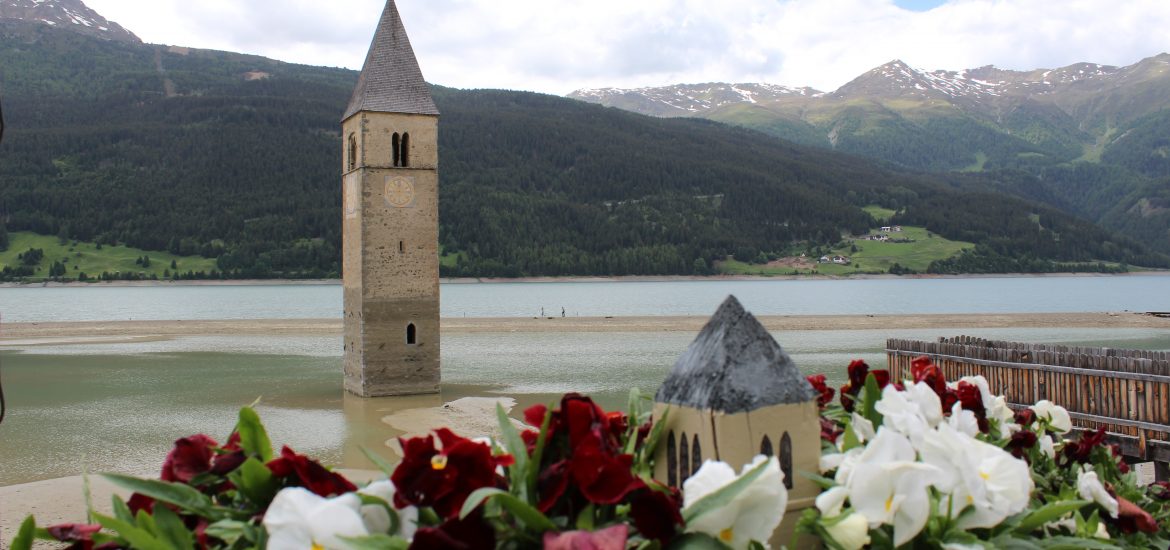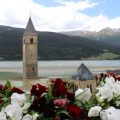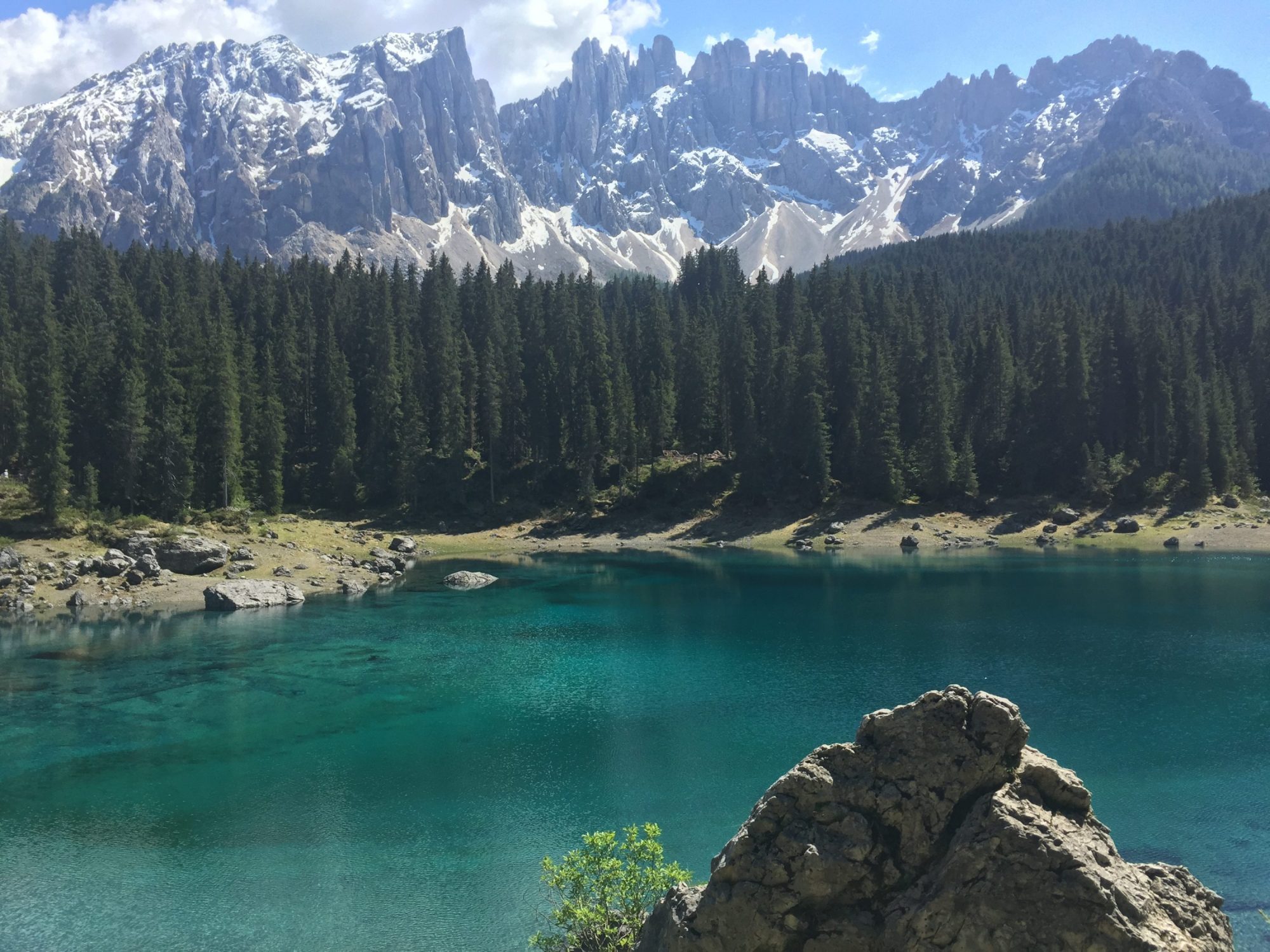(Questo articolo è disponibile anche in Italiano)
Trentino- Alto Adige is definitely a region full of alpine lakes, sorrounded by pine forests and by the well-known Dolomites mountains.
In this post I’d like to suggest 6 lakes that, in my own opinion, you can’t miss on your trip in Trentino-Alto Adige!
1. Lake Carezza – Alto Adige (Bolzano)
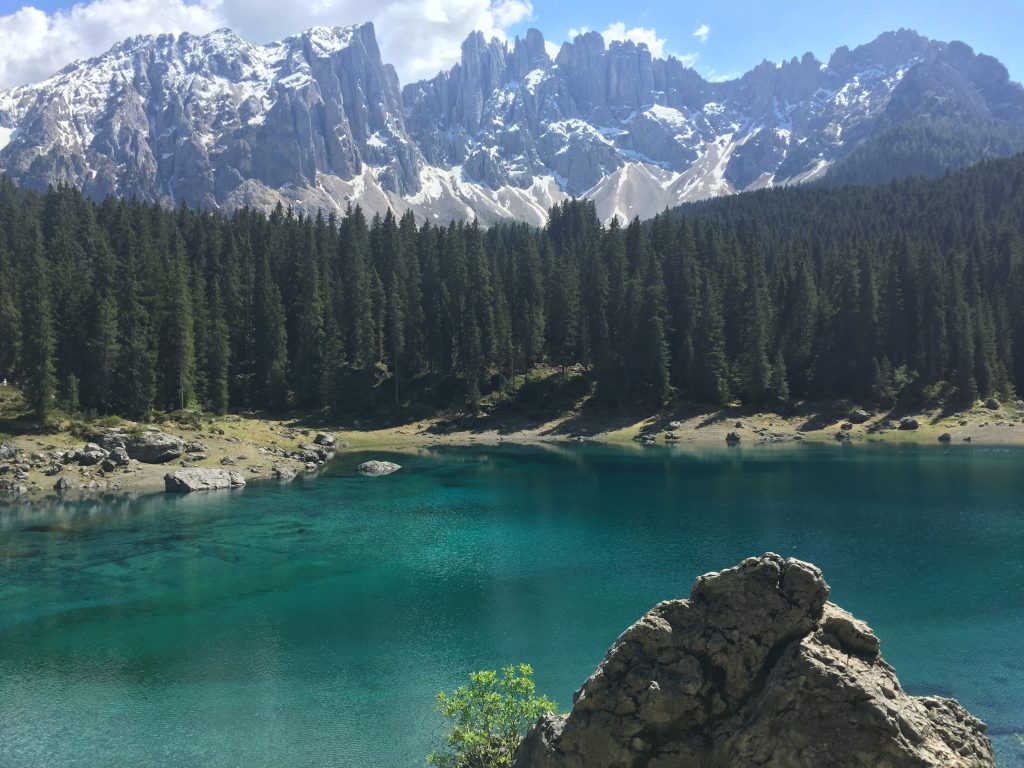
One of the most famous and well-known lake in Alto Adige is undoubtedly the Lake Carezza. Places at the foot of the Latemar mountain and sorrounded by a deep pine forest, this small lake is also called “Rainbow Lake” (from the Ladin name Lac Ergobando), because of the colors of its clear water and of its legend, about which I’ve written in my very first post. In my opinion, it’s the most beautiful and the most fairy-tale lake in Alto Adige and it’s worth a visit for sure!
Unfortunately, the strong winds and rainfalls that affected the Trentino-Alto Adige region in November 2018 have partially destoryed the pine forest around the lake.
2. Lake Tenno – Trentino (Trento)
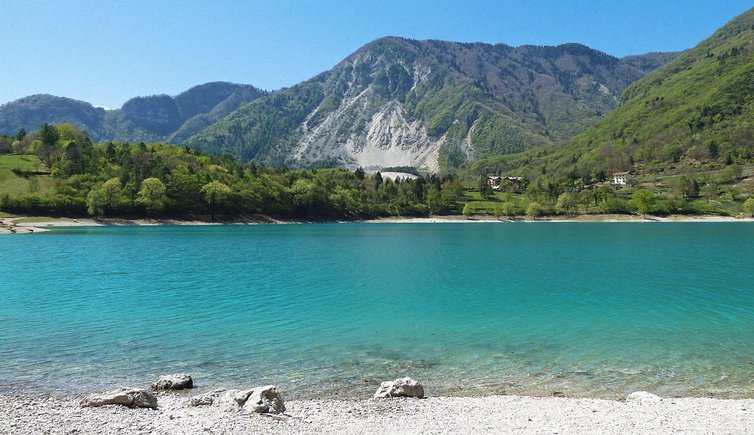
Even though this small alpine lake isn’t so much known outside Trentino area, the Lake Tenno’s definetely worth a visit during any season. It’s located in Tenno, famous for its medieval village, not far from the Garda Lake.
This small lake is distinguished for the azure-torquoise color shades of the water and it’s popular among children and adults to be the most limpid and clear freshwater lake in Italy.
In the middle of the lake there is a small island, called “Island of year ’86”, which emerges only during severe drought conditions. “When you’ll see myself, you’ll cry” is the message written on a plate, which was put up in 1986.
3. Lake Tovel – Trentino (Trento)
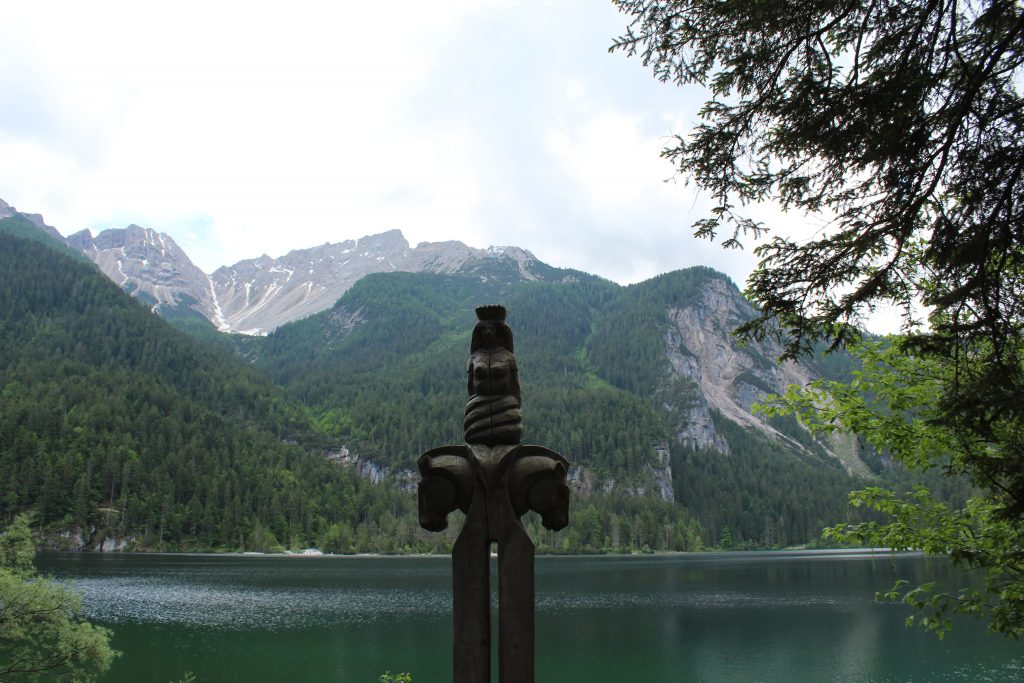
The Lake Tovel is located in Val di Non, inside the Ademello-Brenta Natural Park. Until some time ago it was known for the characteristic reddening of its waters, due to the flowering of an algae, which lived on the lakebed. The lake waters stopped turning red in 1964. Some recent studies have established that this phenomenon has disappeared due to the new methods of cattle breeding. In fact, in the summers before the ’60s, the cows were grazed on the shores of the lake, bringing the organic loading rate such as to make the algae of the lake bloom.
An easy path goes around the lake shore. Then, halfway there is also a museum dedicated to the history of this lake, to the fenomenon of the reddening of the waters and to the brown bears that populate the woods around Tovel.
The fairy-tale note isn’t missing even here! A legend has it that the characteristic red color of the lake was due to the blood of Ragoli’s soldiers, dead in the lake during a violent struggle against the enemies of the arrogant king of Tuenno, who wanted to subdue them.
4. Lake Resia – Alto Adige (Bolzano)
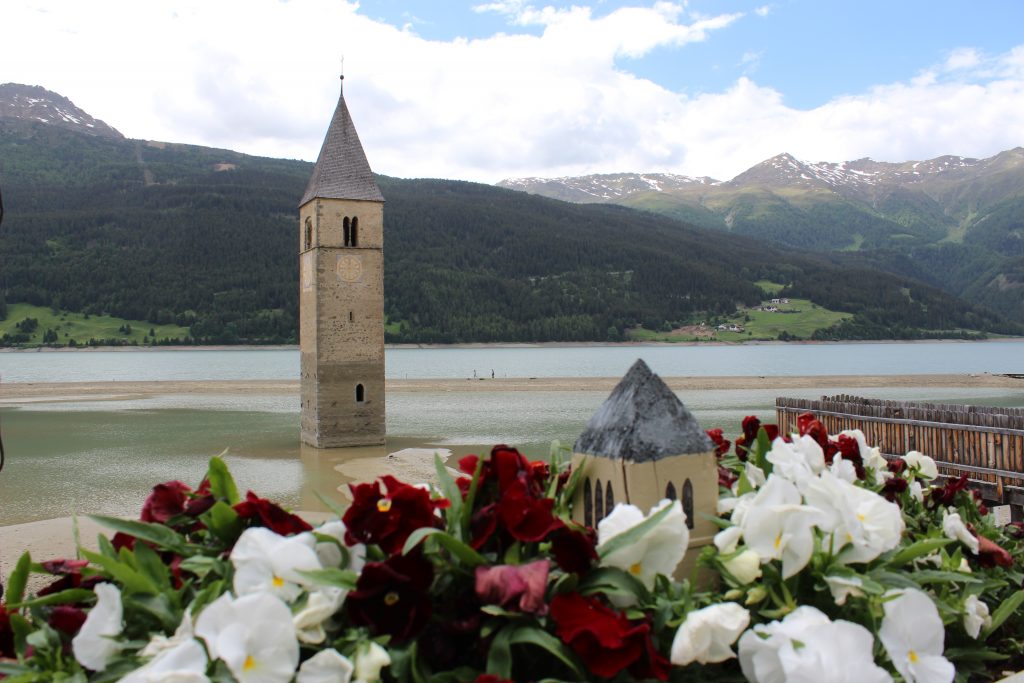
The Lake Resia is located in Alto Adige region, in the village of Curon Venosta and it’s very famous for the belltower, which emerges from the waters of the lake. Altought this, the history of this stretch of water is rather sad.
Indeed, two natural lakes were located in this area: Lake Resia and Lake Curon. However, as early as 1920, the fascist government was planning to unify them into one large lake and use the water to produce electricity. So, in 1939, a project was launched to build a dam for the two natural lakes. The inhabitants of the village of Curon Venosta and a part of those of Resia were forced to leave their homes “in the name of national interest for the strengthening of the national industry“, without the right to any compensation.
The Second World War delayed the works, but in 1946, despite the economic difficulties and the lack of all the raw materials necessary for the continuation of the work, the works were resumed thanks to some Swiss investments and completed with the inauguration in 1949.
Having no popular representative elected because of the fascist regime, the towns of South Tyrol were powerless. During the summer of 1950, the buildings were blown up and flooded and the townships forced to emigrate to shantytowns.
The only “survivor” was the Romanesque belltower that was left there for reasons of protection. A legend tells that, on some winter days, the bells are still heard (which were removed from the bell tower in 1950, before the lake was formed).
5. Lake Braies (Bolzano)
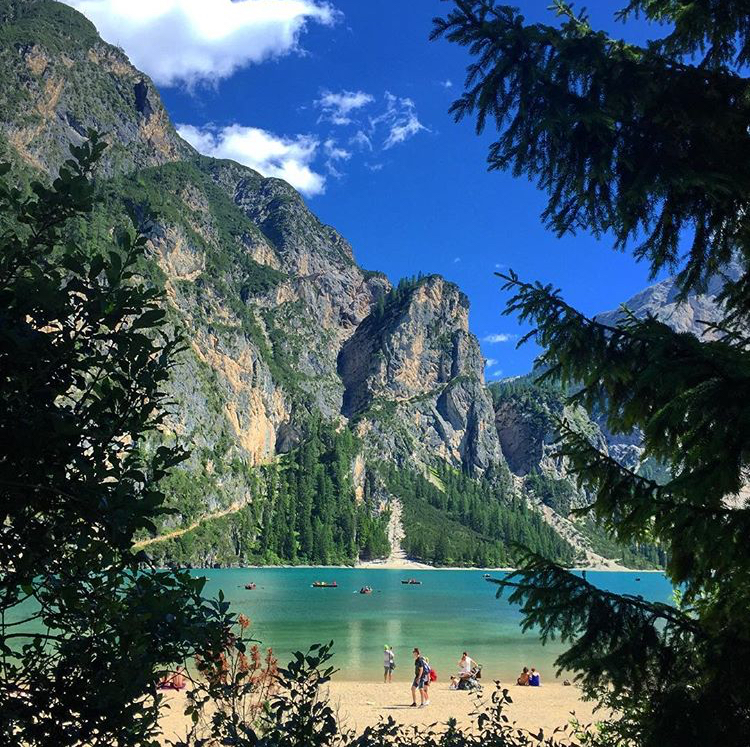
Very famous in Italy for being the location of the RAI TV series “Un Passo dal Cielo“, the Braies Lake is located in Val di Braies, next to the Val Pusteria (Bolzano), at the foot of the Croda del Becco (Sass dla Porta ).
There are several legends related to the birth of this lake. One of these tells of a population of ugly savages that guarded the gold in the nearby mountains. One day, they decided to donate some products made from their gold to some farmers in the valley. The latters, who became very greedy, decided to seize the precious metal. Thus, the savages decided to prevent the farmers from reaching the mountains by making springs of water from the subsoil. These created the Lake Braies.
Another story, however, refers to an ancient kingdom of the Ladin mythology: the kingdom of the Fanes. It is said that every year, on a full moon night, the Fanes survivors leave the Croda del Becco mountain to sail the lake on wooden boats, led by their queen and the mythical heroine Lujanta.
6. Lakes of Lamar – Trentino (Trento)
Visualizza questo post su Instagram
The Lakes of Lamar are located just below Mount Paganella, in the autonomous province of Trento. Separated by a landslide, the lakes once formed a single lagoon: Lake Lamar and Lake Santo. Their green waters are a tourist destination for locals and a place to relax, as is also the lake Terlago, a few kilometers further downhill. From the ponds there are also several paths that lead to the top of Mount Paganella.

